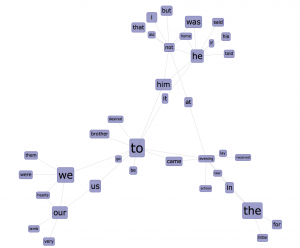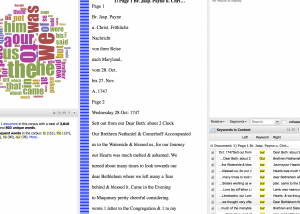In the past, people tended to value close reading over the broad brushstrokes of information visualization. However, the subtlety of word choice and the nuance of phrasing reveal that apparently straightforward texts are more complicated. Then, a number of scholars have cited Franco Moretti’s concept of “distant reading”. Distant reading means understanding literature not by studying particular texts, but by aggregating and analyzing massive amounts of data. Opposite to close reading, distant reading can uncover the true scope and nature of literature. Also, it provides us the opportunity not only to enhance our vision but also to rethink some of our basic assumptions about how to read by using visualization tools. Text visualization tools propose distant reading as complementary practices that promise wide-angle perspective on the large corpora of texts housed in digital archives and the serendipitous discovery of the knowledge these archives contain. Now, Let’s explore these tools with our transcription of the travel journal.
Links is one of my favorite tools. It represents the collocation of terms in the text by depicting them in a network through the  use of a force directed graph. The frequency of the word is indicated by the relative size of the term, which helps me find the main term easier. The most attracting part is that I can click on any term I’m interested in, after I click on the term, other terms related to that term would appear. By doing so, I can discover more and more relationships between the terms in the text.
use of a force directed graph. The frequency of the word is indicated by the relative size of the term, which helps me find the main term easier. The most attracting part is that I can click on any term I’m interested in, after I click on the term, other terms related to that term would appear. By doing so, I can discover more and more relationships between the terms in the text.
Bubblelines is another tool that visualizes the frequency and repetition of a word’s use in the text. Each document is  represented as a horizontal line and the selected word is represented as bubbles. The size of the bubble indicates the word’s frequency. By checking the box of separate lines for terms, the bubble line will be split into separate lines with different terms and colors. When you click on a bubble, you can see the entire text that includes the word in the bubble.
represented as a horizontal line and the selected word is represented as bubbles. The size of the bubble indicates the word’s frequency. By checking the box of separate lines for terms, the bubble line will be split into separate lines with different terms and colors. When you click on a bubble, you can see the entire text that includes the word in the bubble.
Leave a Reply